
A Long-Awaited Trip to Malvan
I had been wanting to visit Malvan for a long time, mainly for two reasons—the iconic Sindhudurg Fort and the chance to indulge in authentic Malvani cuisine.
The Journey Begins: Vengurla to Malvan
We left Vengurla and set off toward Malvan via the Chipi Bridge route near Parule. As we reached the magnificent Chipi Bridge over the Kali River, we, like other tourists, couldn’t resist stopping for a while. The breathtaking view of the wide river stretching on both sides was mesmerizing. The scorching sun above was draining our energy, but we still paused to soak in the beauty and capture it in our cameras before continuing our journey.

A Taste of Authentic Malvani Cuisine
By the time we reached Malvan via Chipi Airport, it was already past 2 PM. We decided to first treat ourselves to a delicious Malvani thali before heading further. Stopping at a small, homely eatery serving traditional meals, we enjoyed a flavourful and satisfying lunch before resuming our adventure.
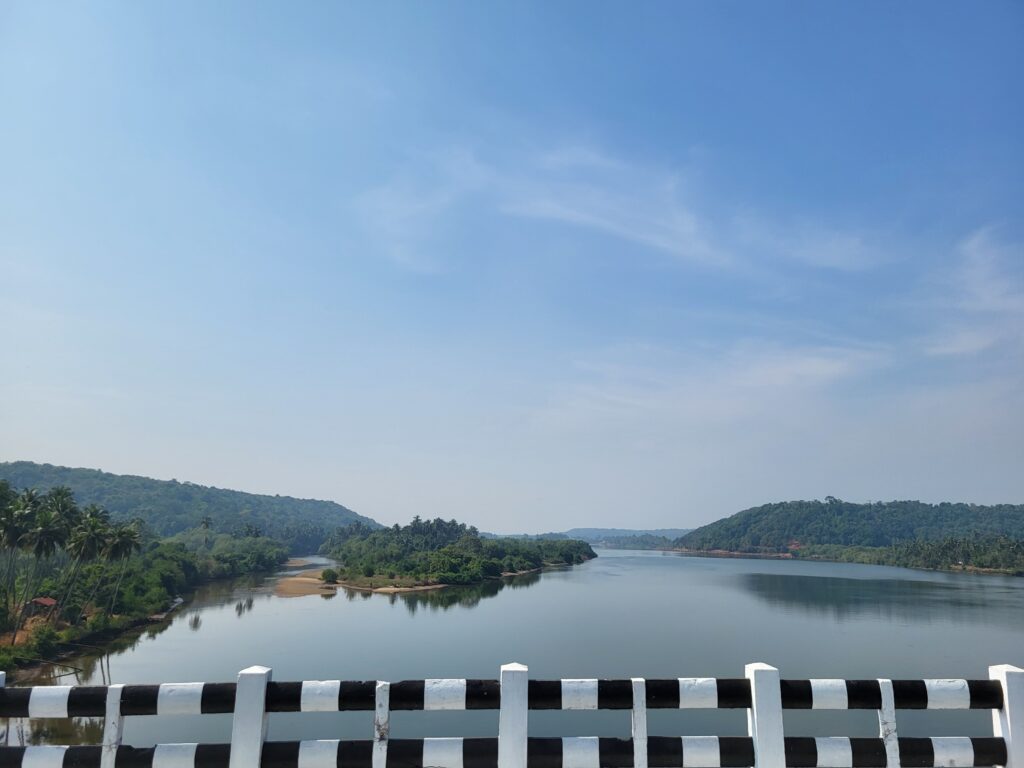
Straight to Sindhudurg Fort: A Journey Through History
Without wasting time booking a hotel, we decided to head straight to Sindhudurg Fort. We reached the jetty from where boats take visitors to the fort. The entire harbour was packed with people—it was the holiday season, with a long weekend following Saturday and Sunday, and the year was coming to an end. Boats, filled to capacity, were continuously ferrying passengers back and forth.
The Boat Ride to the Fort
After purchasing our tickets, we joined a long, slow-moving queue under the blazing sun. Nearby, water sports activities were in full swing, and watching them kept us entertained, making the wait in the heat feel a little less exhausting.
Finally, our turn came, and we boarded a boat. Wearing life jackets, we were all set for the short journey—around one to one-and-a-half kilometers across the sea—to Sindhudurg Fort.
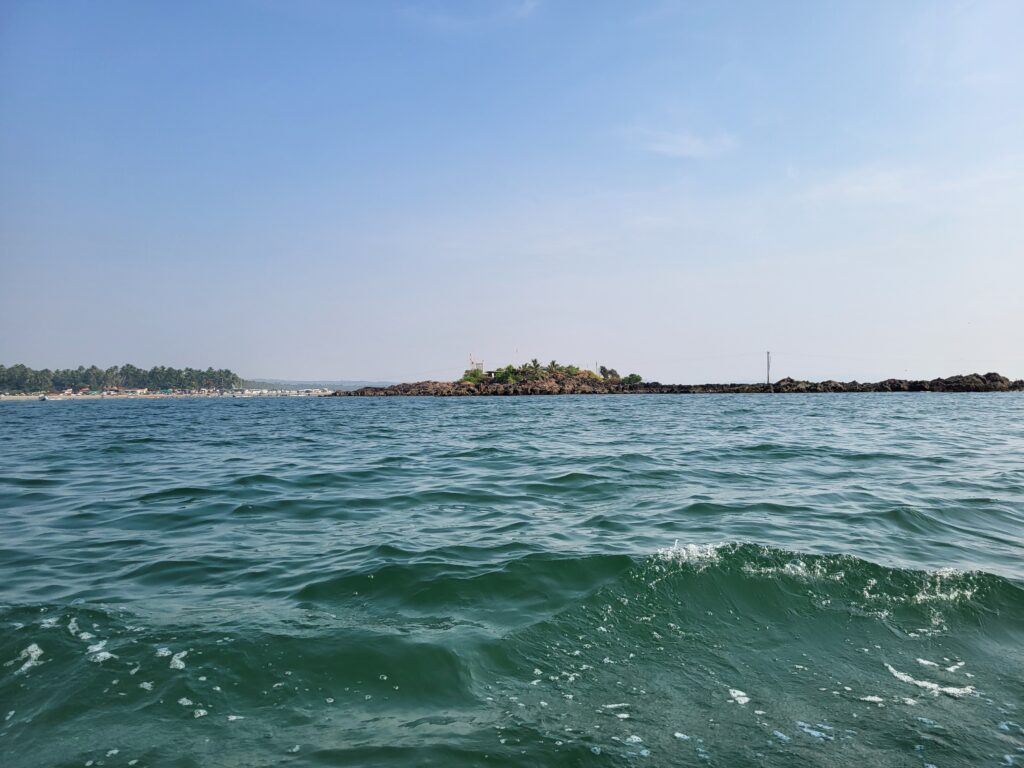
A Mix of Reverence and Disappointment
As soon as we entered the fort, our devotion to Chhatrapati Shivaji Maharaj surged within us. Walking through those historic walls, we were once again reminded of his greatness and the unwavering loyalty of his brave warriors. A small part of us hoped that every visitor here would feel the same reverence, but sadly, reality was different.
Instead of respecting the sanctity of this historic place, some people seemed more interested in shouting “Jai Bhavani, Jai Shivaji” loudly, as if proving their devotion through noise. They strutted around with an air of arrogance, believing themselves to be true followers of Shivaji Maharaj.
On the other hand, there were tourists who had no connection with the history of this sacred fort. For them, it was just another sightseeing spot. Dressed in flashy, inappropriate outfits, they were more focused on taking selfies than appreciating the legacy of the place. Adding to the disappointment, plastic bottles and trash littered by such visitors were tarnishing the fort’s surroundings.
Seeing all this was deeply disheartening.
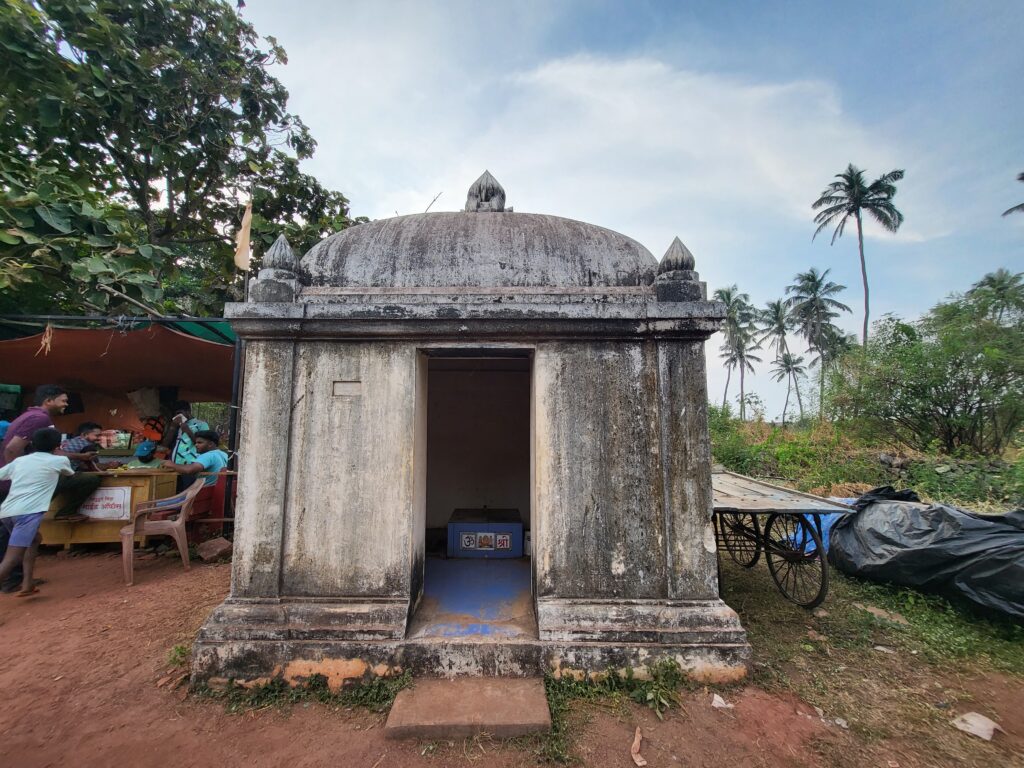
Refocusing on History
Since changing this entire scenario was beyond my control, I chose to shift my focus back to the fort and the remarkable legacy of Chhatrapati Shivaji Maharaj. To truly understand the history and significance of the fort, we felt it was necessary to have a good guide. Fortunately, we found a young and knowledgeable guide named Sawant, and we set off with him to explore the fort.
The Sacred Temples of Sindhudurg Fort
Sindhudurg Fort houses a total of six temples. Right at the entrance, there is a small shrine dedicated to South-facing Lord Hanuman. As we moved further inside, we came across the temple of Jarimari Devi. In addition, the fort also has temples of Lord Mahadev, Goddess Bhavani, and Mahapurush.
A Unique Tribute to Shivaji Maharaj
However, the most significant one is the temple of Chhatrapati Shivaji Maharaj, which was built in 1695 by Rajaram Maharaj.
What makes this temple unique is the idol of Shivaji Maharaj—it depicts him in the attire of a fisherman, with a round, beardless face, unlike his usual representations.
Hidden Passages and Ancient Relics
The Mahadev temple also has an underground passage, which is said to open in a village named Ozar. The idol of Goddess Bhavani, made of stone, is believed to be more than 350 years old.
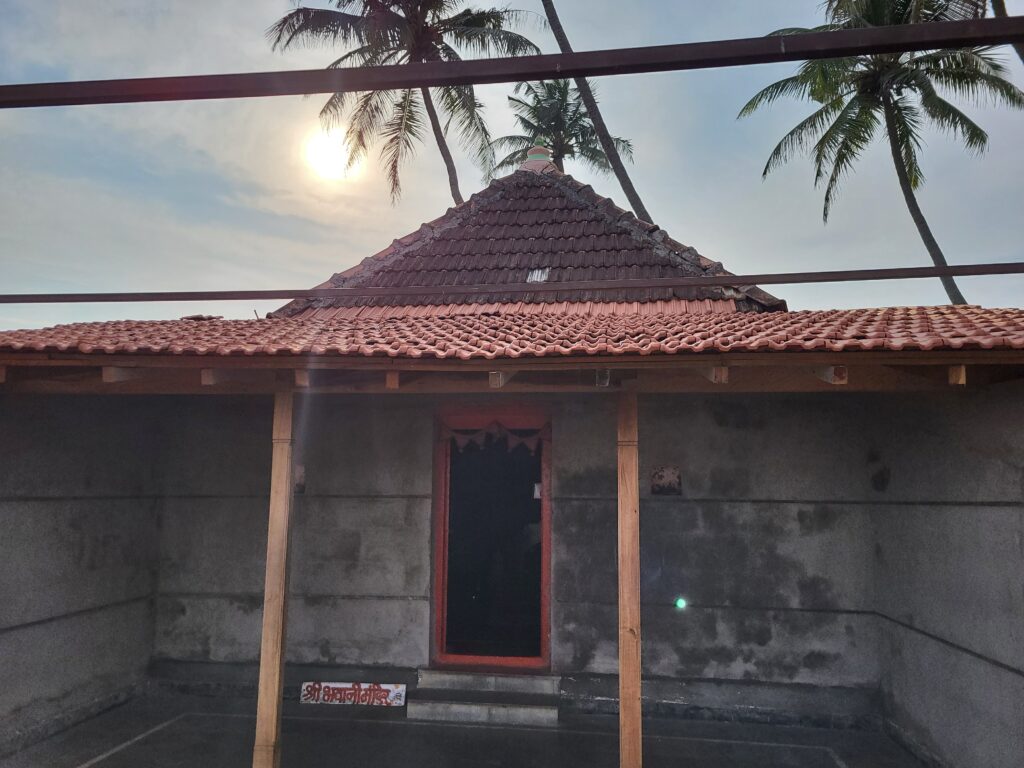
The Majestic Sindhudurg Fort: A Testament to Shivaji’s Vision
On the shores of Malvan, amidst the vast Arabian Sea, lies Kurte Island, where Chhatrapati Shivaji Maharaj built the grand Sindhudurg Fort. The fort was constructed under the supervision of Killedar (fort commander) Govind Prabhu, with the architectural expertise of Hiroji Indulkar. Spread across 48 acres, the fort features 29 bastions, 200 cannons, and living quarters for guards. Its formidable ramparts stretch 3 km in length and rise 9 meters high. The construction took three years, from 1662 to 1665.
Ingenious Architecture and Strategic Defenses
The main entrance of the fort is made of teak wood. Strategically, the fort walls contain slanted holes, known as jangyas, through which boiling oil could be poured onto invading enemies. Upon entering, one comes across the Nagar Khana, a chamber used for beating war drums. Remarkably, the fort also preserves the imprints of Shivaji Maharaj’s hand and foot inside a small dome. The bastions include a watchtower and the Gaumukhi bastion, offering a strategic advantage for surveillance. The fort’s ramparts have 42 staircases leading to various levels. Built to be impregnable from all sides, its construction cost one crore gold coins.
Wells, Reservoirs, and the Lost Royal Palace
Inside the fort, there are three distinct wells known as Dudh (Milk) Well, Dahi (Curd) Well, and Sakhar (Sugar) Well, all built using laterite stone. Additionally, the fort contains a natural seepage reservoir. The Rajwada (royal palace), built by Rajaram Maharaj, once served as the residence of Queen Tarabai. However, in 1765, the British attacked and destroyed the palace after capturing the fort, renaming it Fort Augustus.
Life Inside the Fort Today
Today, there are 18 houses within the fort, and the current generation living there is the twelfth in lineage. However, only a few families continue to reside in the fort permanently.
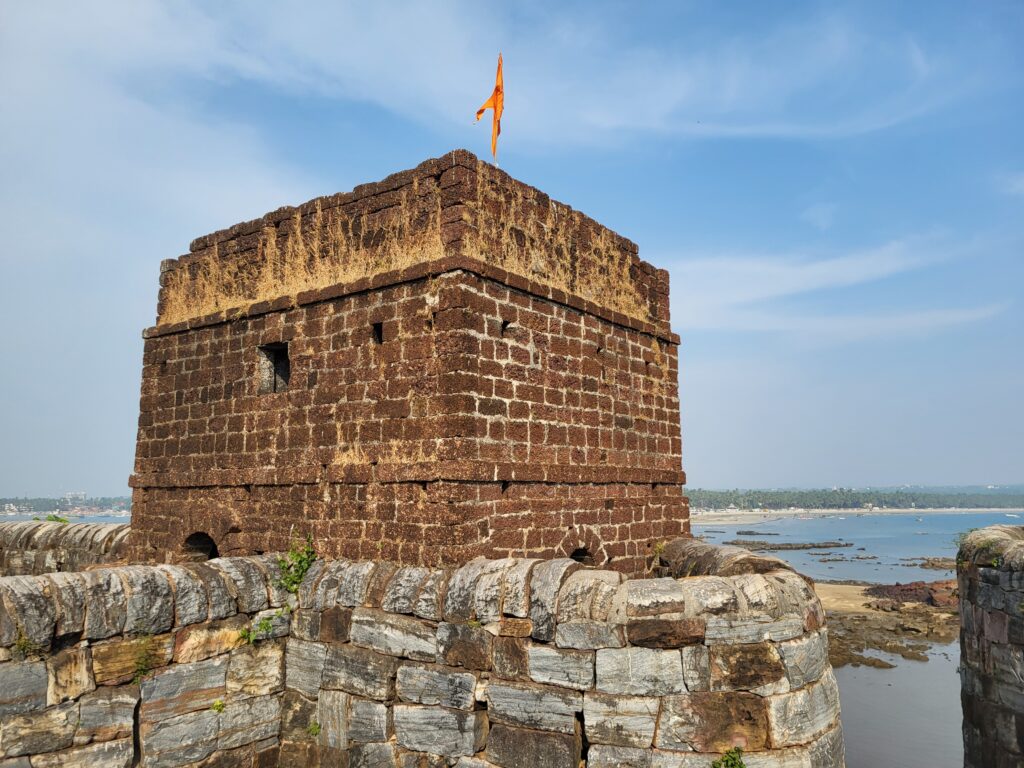
Preserving Heritage: Beyond Slogans and Blame
As we immersed ourselves in the rich history of Sindhudurg Fort, we eventually stepped back into the present and took a fresh look at the fort’s current condition. Despite the witty and thought-provoking Puneri-style signboards urging people to keep the area clean, plastic bottles were scattered all around. Overgrown wild vegetation at various spots further added to the neglect, leaving us deeply disheartened.
It’s easy to blame the government, but when will the citizens—who constantly point fingers at the authorities—start taking responsibility themselves? Tourists, in particular, have a special duty to maintain the cleanliness of the places they visit. When will they realize this?
Well, so be it.
As we bid farewell to Sindhudurg Fort, we silently prayed that devotion to Chhatrapati Shivaji Maharaj should not remain limited to mere slogans. Instead, his values, character, and teachings should truly reflect in the actions of those who consider themselves his followers.
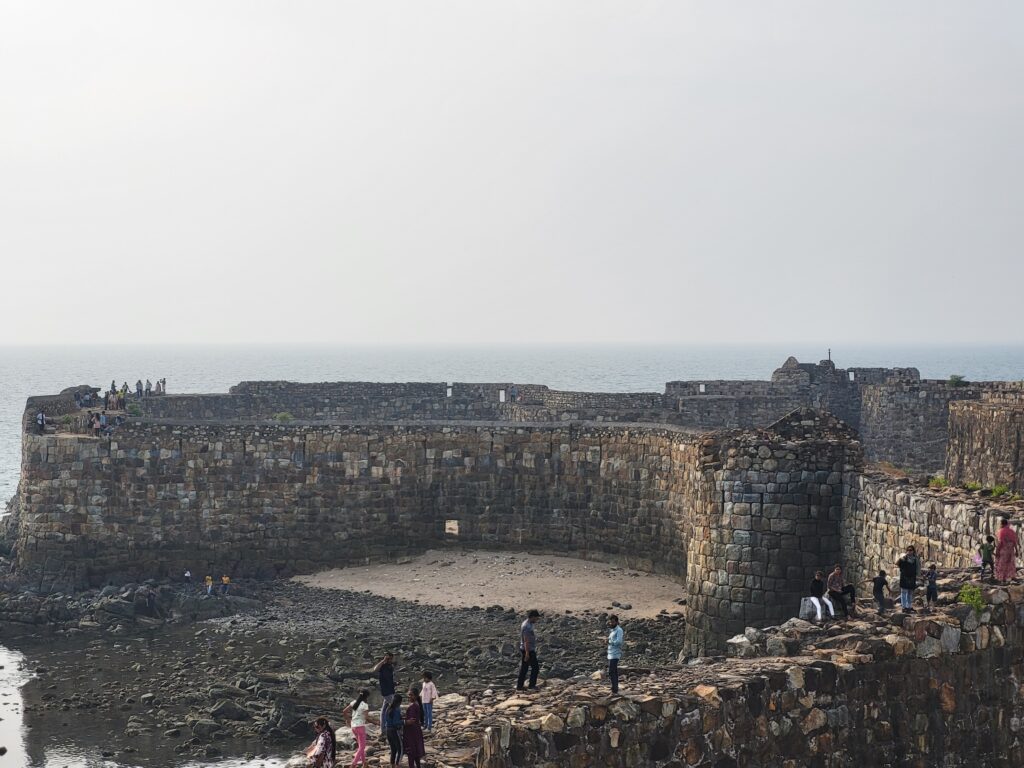
A Struggle for Shelter: The Year-End Rush in Malvan
Our main task now was to find a place to stay for the night. We went from one hotel to another, checking homestays as well, but everywhere we got the same response—”Fully booked.” We spent an hour searching, only to be told eventually, “You probably won’t find a room anywhere.”
Why? Because it was year-end, of course! Apparently, Malvan is packed every year during this time.
Goa is always packed with tourists, so we chose to step away and explore the Konkan region instead.
But to our surprise, even Konkan was just as crowded!
With the worry of “What if we don’t get a room at all?” lingering in our minds, we continued our search. And by sheer luck, we managed to find the last available room in a homestay.
Relieved, we checked in, freshened up, and immediately stepped out for dinner. Looking at how crowded Malvan was, we felt it was best to eat early before the rush got even worse.
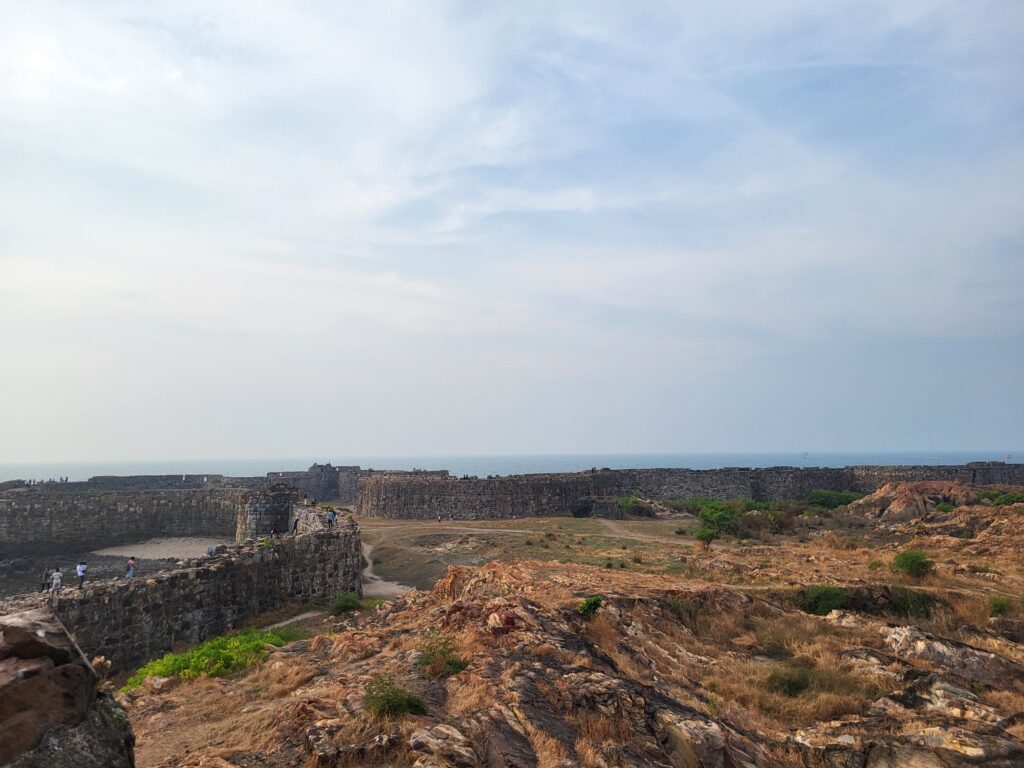
A Culinary Delight at Chaitanya Restaurant
The streets of Malvan are quite narrow, and with the influx of tourists, the traffic was heavy. Navigating through the congestion, we looked up a place on Google and found a restaurant nearby called Chaitanya.
The restaurant was small in size, but the food was absolutely top-notch. Both the seafood and vegetarian dishes were delicious. In fact, the vegetarian Pakvanna thali was so exquisite that it completely won us over.
The next day, after visiting Rock Garden and a few other places in Malvan, we had to start our return journey. So, without any delay, we headed back to the hotel.


